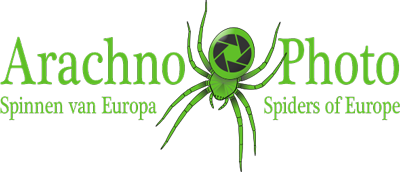The Atypidae family is one of the six Bird-Eating Spider families (Mygalomorphae) in Europe (the species in Europe don’t actually eat birds however). They are large, robust spiders with remarkably large chelicerae and relative short legs. The chelicerae move vertically. Spiders from other European families have horizontally moving chelicerae. Three species live in Europe, all within the single genus Atypus .

Genus Atypus
The spiders within this genus make a hole in the ground where they weave a tube-shaped dwelling. The tube also has a small part aboveground camouflaged with soil particles. When a prey passes by, the spider shoots upward and pulls it in, right through the weave, by using its strong jaws. Most of its life the spider sits in the tube and is therefore hard to find. Sometimes you can see a male wandering around looking for the dwelling of a female. The mating takes place during the winter months and the eggs hatch in late summer. In the following spring the juvenile spiders leave the dwelling. It will take four years for them to become fully grown.

